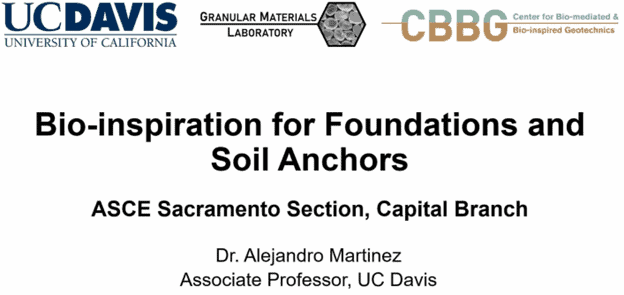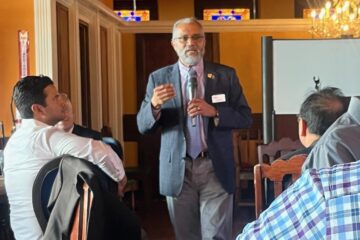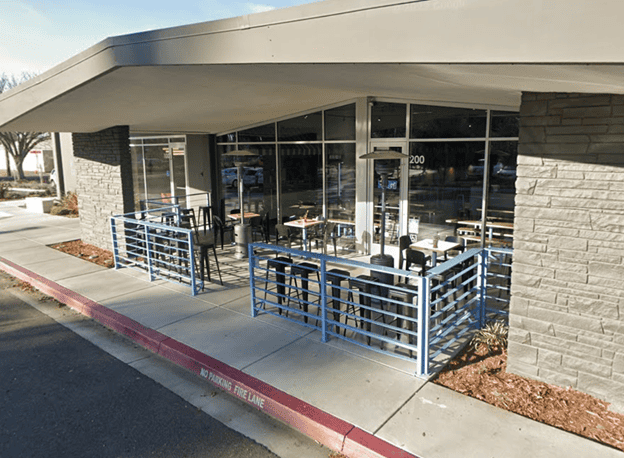The ASCE Capital Branch held their monthly virtual presentation with Alejandro Martinez, PhD, an associate professor from the University of California, Davis. He presented an overview of frameworks and recent developments in biogeotechnical research for the development of new technologies that seek to increase the material- and enginery-efficiencies and reduce the carbon footprint of geotechnical systems.
View the recording for this presentation by clicking here.

About the Presentation:
The emerging field of biogeotechnics is founded on the idea that natural processes can be applied to increase the sustainability, efficiency, and resiliency of geotechnical systems. Biogeotechnics consists of bio-inspiration (i.e. learning from biology) and bio-mediation (i.e. using a biological process). Recent research has shown that natural solutions, such as the anchorage of tree root systems and the improvement of soil properties by bacteria, can inspire a new paradigm to meet standing geotechnical and civil engineering challenges.
This presentation will provide an overview of frameworks and recent developments in biogeotechnical research for the development of new technologies that seek to increase the material- and enginery-efficiencies and reduce the carbon footprint of geotechnical systems. The bio-inspired examples that will be presented include snakeskin-inspired surfaces for foundations and soil nails and tree root-inspired architectures for anchors. This presentation will also emphasize methods to verify the performance of newly-developed biogeotechnical solutions and share the results of recent field implementations.
About the Presenter:

Alejandro Martinez is an associate professor at the University of California Davis. He obtained his Ph.D. and M.S. degrees from Georgia Tech in 2015 and 2012, respectively, and his B.S. from the University of Texas at Austin in 2010. His research aims to further the understanding of soil behavior and soil-inclusion interactions involved in geotechnical engineering as well as in burrowing and locomotion. His research interests include soil-structure interaction, bio-inspired geotechnics, fabric effects on soil behavior, and static liquefaction of soils. His research employs a combination of experimental laboratory, hypergravity modeling, and numerical techniques. In 2020, he received the NSF CAREER award and in 2022 he received the ASCE Arthur Casagrande Career Development Award.



0 Comments